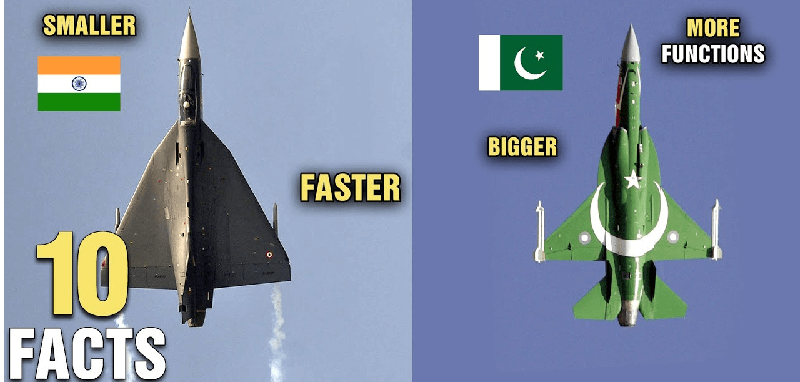10 facts which reveal PAF JF 17 Thunder is better than Indian Tejas
Shares

Abhijit Iyer-Mitra, a senior fellow at the Institute of Peace and Conflict Studies in New Delhi, explained why foreign nations are favoring the JF-17 over India's Tejas to the EurAsian Times. He outlined ten key reasons for Tejas' lackluster performance and the JF-17's attractiveness:
1. Tejas has limited weapon compatibility, predominantly with Indian and some Western arms, which may not be suitable for foreign buyers. 2. The JF-17 aligns with China's extensive supply of proven weapons, making it a more attractive choice for potential buyers.
3. China's Security Council Veto power gives buyers influence over Security Council decisions, while India lacks this advantage. 4. The JF-17 serves as a suitable replacement for older fighter aircraft and armed trainers, offering the right capabilities and price point. 5. Tejas lacks a clear market segment, making it a confusing choice for buyers.
6. The JF-17 boasts modest but proven advancements in its design. 7. Tejas lacks a track record and instills little buyer confidence due to its mixed components. 8. JF-17's equipment allows for re-export to third countries, while Tejas components do not.
9. Tejas relies on components from countries that prohibit re-export, further limiting its appeal. 10. Tejas faces reduced buyer confidence as it lacks major operators, even within the Indian Air Force.
In contrast, the JF-17 Thunder program has been successful, with over 100 units in service with the Pakistan Air Force, simplifying logistics, servicing, and upgrades. This explains why countries like Myanmar and Nigeria have chosen the JF-17 Thunder over other options. Other nations like Azerbaijan, Iraq, and Argentina are also considering advanced JF-17 variants due to affordability, after-sale services, and financing options.
